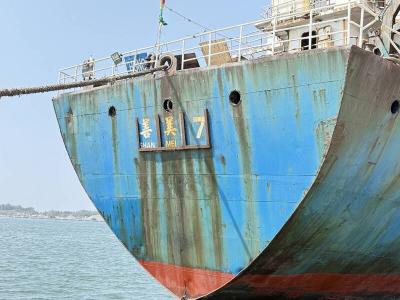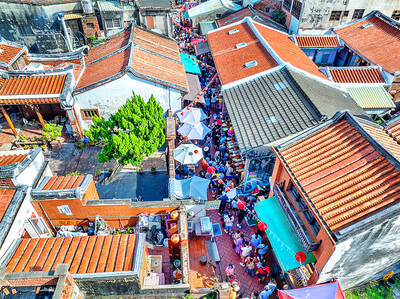This year’s Earth Day passed on Tuesday with close to 100 different “green” events held around the nation to honor Mother Nature.
But as Environmental Protection Administration (EPA) Minister Winston Dang (陳重信) stressed, the Earth Day activities were only one-day events hosted to stimulate public interest and broaden knowledge of eco-friendly behavior so that people could begin to practice them in everyday life.
And conservation of water and electricity may become an essential part of life in the future, with waves of academics and experts urging the new government to increase water, energy and gas prices.
In line with the trend, president-elect Ma Ying-jeou (馬英九) said at an environmental press conference on Monday that to promote carbon reduction, he would implement energy taxes and greenhouse gas emission reduction laws. He also said he would devise a water usage quota per capita and charge premiums for extra usage.
“If we set a person’s daily water usage at 245 liters, people would think about water conservation when flushing the toilet or using their washing machines,” Ma was quoted as saying.
Jerry Chiou (邱繼哲), founder of the Green Comfortable Healthy Association and nicknamed the “electricity-saving guru,” said that electricity conservation is all about simple mathematics. The first step to saving electricity, besides switching off idle appliances, is to replace all bulbs with the energy-saving variety.
“Your electricity bill is the sum of the wattage of your electric appliances, multiplied by the number of hours they are in use, times the unit price for electricity [currently NT$2.4 per unit],” he said. “Since you cannot change the unit price for electricity, you should work on reducing the wattage of your home appliances and the number of hours you use them.”
Every unit of electricity is equivalent to 1,000 watts used for 60 minutes, he said, explaining that powering a 50 watt light bulb for 20 hours would cost one unit.
The reason that LED bulbs are more energy efficient is because most of the electricity — more than 90 percent — used in incandescent bulbs is emitted not in light, but in heat, Chiou said.
“That means in addition to using more electricity, in summer your air conditioner has to generate extra output to offset the heat emitted by your bulbs,” he said.
“If you consider that fact, and replace a traditional 100 watt incandescent light bulb with a 21 watt LED bulb that produces the same brightness, you save 19 units of electricity and NT$45.6 per month if you use the bulb for eight hours a day,” he said.
The simple calculation reveals that LED bulbs are a worthwhile investment, Chiou said, even with a typical domestic LED bulb costing about NT$70 more than a traditional one. Following the calculation above, LED bulb users could expect electricity savings after the second month of usage.
Domestic water users can similarly slash more than half of their water bills with a few simple tricks and nifty gadgets, said Sheng Yuan-li (盛元禮), secretary-general of the Taiwan Water-Saving Facilities Development and Promotion Foundation.
“With every unit of water conserved, you emit one fewer unit of wastewater into the water treatment system,” Sheng said.
Saying that water conservation should done without inconveniencing users, Sheng stands behind the notion that water saving should not be carried to extremes, “since that would upset people and turn them in the opposite direction.”
“In some department stores, for example, the volume of water is reduced to mere drops,” he said.
“Not only does this annoy people, it prolongs hand-washing time, and therefore in the end does not really save water,” he said.
Using a water-saving kit the Taipei City Government commissioned him to develop as an example, Sheng said that by fitting domestic faucets with his patented plastic O-ring, water output could be cut up to 60 percent, “but users wouldn’t even notice a difference in their water consumption habits.”
“I have designed O-rings in three different sizes to accommodate the water pressure in different homes, so users can choose the size that works best for them,” he said.
Another simple way to save water is to fit toilet bowls with two-stage flushers, he said.
“A person goes to the bathroom five times a day on average, however three to four of those trips are for urination only — and flushing a tank full of water is wasteful,” he said.
Domestic users who wish to convert their toilets can get the flushers from DIY stores, he said, adding that consumers should be careful to check for a Water Conservation Mark on the products, issued by the Ministry of Economic Affairs’ Water Resource Agency.
In addition, Sheng advised the public to investigate actual water output needs in their toilets and lower the water level in their tanks whenever possible.
“By lowering the water level by 1cm, a liter of water is saved per use,” he said.
And besides these tricks, there are other countless ways to save water, Sheng said.
“Homemakers are usually good with water conservation strategies — for example, water used to rinse raw rice makes excellent dish detergent.”
By using less water, if you live in a high-rise building, that means the water pump used to pump water to upper floors would be used less, meaning that you save electricity along the way, he said.
“Every bit counts. With every unit of water you save, you reduce carbon emissions by 0.194kg, and that can add up very quickly,” he said.

An undersea cable to Penghu County has been severed, the Ministry of Digital Affairs said today, with a Chinese-funded ship suspected of being responsible. It comes just a month after a Chinese ship was suspected of severing an undersea cable north of Keelung Harbor. The National Communications and Cyber Security Center received a report at 3:03am today from Chunghwa Telecom that the No. 3 cable from Taiwan to Penghu was severed 14.7km off the coast of Tainan, the Ministry of Digital Affairs said. The Coast Guard Administration (CGA) upon receiving a report from Chunghwa Telecom began to monitor the Togolese-flagged Hong Tai (宏泰)

A cat named Mikan (蜜柑) has brought in revenue of more than NT$10 million (US$305,390) for the Kaohsiung MRT last year. Mikan, born on April 4, 2020, was a stray cat before being adopted by personnel of Kaohsiung MRT’s Ciaotou Sugar Refinery Station. Mikan was named after a Japanese term for mandarin orange due to his color and because he looks like an orange when curled up. He was named “station master” of Ciaotou Sugar Refinery Station in September 2020, and has since become famous. With Kaohsiung MRT’s branding, along with the release of a set of cultural and creative products, station master Mikan

Actor Lee Wei (李威) was released on bail on Monday after being named as a suspect in the death of a woman whose body was found in the meeting place of a Buddhist group in Taipei’s Daan District (大安) last year, prosecutors said. Lee, 44, was released on NT$300,000 (US$9,148) bail, while his wife, surnamed Chien (簡), was released on NT$150,000 bail after both were summoned to give statements regarding the woman’s death. The home of Lee, who has retreated from the entertainment business in the past few years, was also searched by prosecutors and police earlier on Monday. Lee was questioned three

RISING TOURISM: A survey showed that tourist visits increased by 35 percent last year, while newly created attractions contributed almost half of the growth Changhua County’s Lukang Old Street (鹿港老街) and its surrounding historical area clinched first place among Taiwan’s most successful tourist attractions last year, while no location in eastern Taiwan achieved a spot in the top 20 list, the Tourism Administration said. The listing was created by the Tourism Administration’s Forward-looking Tourism Policy Research office. Last year, the Lukang Old Street and its surrounding area had 17.3 million visitors, more than the 16 million visitors for the Wenhua Road Night Market (文化路夜市) in Chiayi City and 14.5 million visitors at Tainan’s Anping (安平) historical area, it said. The Taipei 101 skyscraper and its environs —